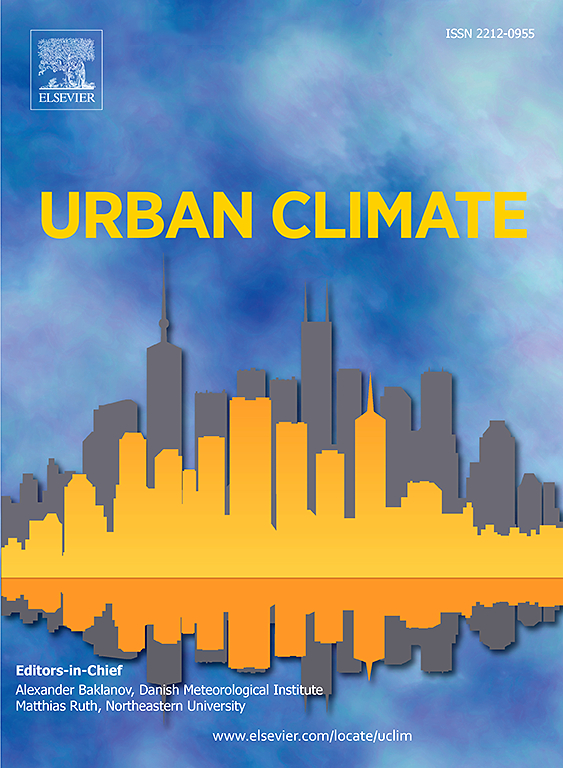Microscale urban heat variability and time-location patterns: Elevated exposure for bikers and rickshaw drivers beyond average city temperatures in megacity
IF 6
2区 工程技术
Q1 ENVIRONMENTAL SCIENCES
引用次数: 0
Abstract
Urban heat island effect creates diverse microclimates, influencing heat exposure and consequent health effects. Study measured heat exposure among delivery riders within their microclimate, comparing it with city's average temperature. We investigated how higher exposure affects work, health, and productivity of riders.
For 21 days in winter and summer, we measured heat exposure during peak hours (under sun and shade) in riders' immediate environment, at seven high-traffic routes in Karachi, Pakistan. Recorded temperature were compared with city's ambient air temperature. In-depth interviews were conducted to assess the impacts on riders' health, welfare, and productivity.
During winter, temperature was 5.0 °C higher under sun and 1.6 °C higher under shade, as compared to city average recorded temperatures. In summer temperature was 5.5 °C higher under sun and 1.8 °C higher in shade as compare to recorded city's average air temperature. Riders reported exhaustion, reduced productivity, income loss, and negative impacts on social wellbeing during hot days. For mitigation riders relied on strategies like staying hydrated and taking breaks from work under shades. Study demonstrated higher exposure to heat for riders in megacity as compare to city's recorded temperature. This led to reduced productivity and income losses, emphasizing need for urgent initiatives to safeguard riders' well-being.
城市微尺度热量变化和时间位置模式:特大城市中自行车和人力车司机的暴露程度高于城市平均温度
城市热岛效应会造成不同的小气候,影响热暴露和随之而来的健康影响。研究测量了外卖骑手在其小气候中的热暴露情况,并将其与城市平均温度进行了比较。在冬夏两季的 21 天里,我们在巴基斯坦卡拉奇的 7 条高流量线路上测量了高峰时段(阳光下和阴凉处)骑手周围环境的热暴露情况。记录的温度与城市的环境气温进行了比较。与城市平均记录温度相比,冬季的日照温度高出 5.0 °C,阴凉处温度高出 1.6 °C。与记录的城市平均气温相比,夏季的日照温度高出 5.5 °C,阴凉处温度高出 1.8 °C。乘客们报告说,在炎热的日子里,他们会感到疲惫、工作效率下降、收入减少,并对社会福利产生负面影响。为缓解这种情况,骑手们采取了一些策略,如补充水分和在阴凉处休息。研究表明,与城市的记录温度相比,大城市的骑行者暴露在高温下的时间更长。这导致了生产率下降和收入损失,强调了采取紧急措施保障乘客福祉的必要性。
本文章由计算机程序翻译,如有差异,请以英文原文为准。
求助全文
约1分钟内获得全文
求助全文
来源期刊

Urban Climate
Social Sciences-Urban Studies
CiteScore
9.70
自引率
9.40%
发文量
286
期刊介绍:
Urban Climate serves the scientific and decision making communities with the publication of research on theory, science and applications relevant to understanding urban climatic conditions and change in relation to their geography and to demographic, socioeconomic, institutional, technological and environmental dynamics and global change. Targeted towards both disciplinary and interdisciplinary audiences, this journal publishes original research papers, comprehensive review articles, book reviews, and short communications on topics including, but not limited to, the following:
Urban meteorology and climate[...]
Urban environmental pollution[...]
Adaptation to global change[...]
Urban economic and social issues[...]
Research Approaches[...]
 求助内容:
求助内容: 应助结果提醒方式:
应助结果提醒方式:


